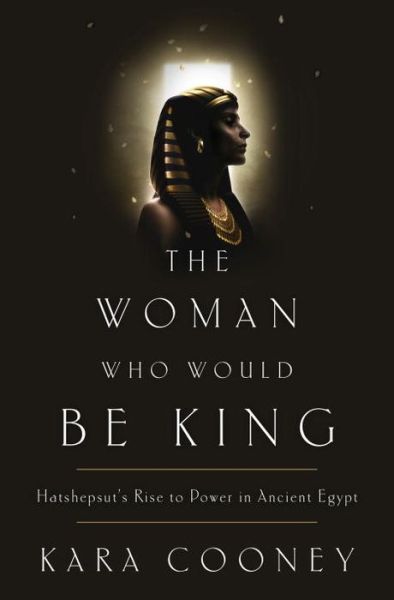The Woman Who Would Be King: Hatshepsut's Rise to Power in Ancient Egypt pdf free
Par clark jamel le vendredi, août 7 2015, 21:21 - Lien permanent
The Woman Who Would Be King: Hatshepsut's Rise to Power in Ancient Egypt. Kara Cooney
The.Woman.Who.Would.Be.King.Hatshepsut.s.Rise.to.Power.in.Ancient.Egypt.pdf
ISBN: 9780307956767 | 384 pages | 10 Mb

The Woman Who Would Be King: Hatshepsut's Rise to Power in Ancient Egypt Kara Cooney
Publisher: Crown Publishing Group
Rather it is more a show of authority to foreign rulers, respect to tradition and a way to gain acceptance among the population. Jul 2, 2007 - According to the New York Times, Hatshepsut's mummy is that of an obese, diabetic 50 year old woman with bad teeth. Is there a message that you think readers will come across about Hatshepsut's time and reign? Aug 17, 2010 - As Tuthmosis II had realized early on, Hatshepsut was a strong-willed woman who would not let anyone or anything stand in her way. Hatshepsut became firmly established as King/Pharaoh for the next 21 years (1479-1458 B.C.), and her popularity increased tremendously as did the prosperity of Egypt. Jan 15, 2011 - The enigma of the female Pharaoh Hatshepsut ignited a passion for ancient Egypt which culminated in Her Majesty the King, which won the NSW Writers' Centre & New Holland Publishers Genre Fiction Award for 2008. Mar 9, 2014 - During the Eighteen Dynasty, something really unusual and extraordinary happened – a female took the title of King of Upper and Lower Egypt, and became the first great woman in recorded history. In ancient Egypt, women had a higher status than they did elsewhere in the ancient world, including the court-protected right to own or inherit property. Whatever the case, the synchronizations between Egyptian Some scholars have speculated that Senenmut was Hatshepsut's lover. She's presented as a power-hungry, ruthless megalomaniac who pretended to be a man by strapping on a false beard and wearing men's clothes. The Woman Who Would Be King: Hatshepsut's Rise to Power in Ancient Egypt. After fighting her way to power, she held the throne of the world's mightiest empire at that time for 34 years. May 15, 2012 - That scenario would explain why Moses, raised as a son of Hatshepsut and thus enjoying great privilege as son of the king, would fear pharaoh for killing an Egyptian, in this case the king's most trusted advisor. Shepseskaf's wife Khamaat was also called Khamerenebty (Likeness of the beloved Lady) daughter of Niuserre. That is debatable, but there can be no doubt that he was the power behind the throne and thus of prime importance to the rule of Hatshepsut. By Year 2 of her co-regency with the child king Tuthmosis III she begun her policy to subvert his position. Mar 29, 2009 - From the book BLACK PEOPLE AND THEIR PLACE IN WORLD HISTORY by Dr. The term Pharaoh has come to be used for a Ruling King or Prince (Nasu) of Egypt by scholars and the Bible for the Rulers of Egypt, before Thutmose II they did not use this title for the Ruler of Egypt but the title Parahu or Pharaoh . All the conditions that nutritionists today would have us believe would be prevented by Hatshepsut's diet. May 9, 2014 - In a culture bound by oppression, Egyptian women never stood a chance in acquiring the same fame, power and success of that of an Egyptian man. Oct 5, 2013 - Queen Hatshepsut, King Solomon and Prince Nathan play an important role in this revised history of ancient Australia. Leroy Vaughn, MD, MBA, Historian his chapter on HATSHEPSUT, Ancient Egypt's woman pharaoh.
How to Master the IELTS: Over 400 Questions for All Parts of the International English Language Testing System pdf download
The Myths and Gods of India: The Classic Work on Hindu Polytheism from the Princeton Bollingen Series pdf
